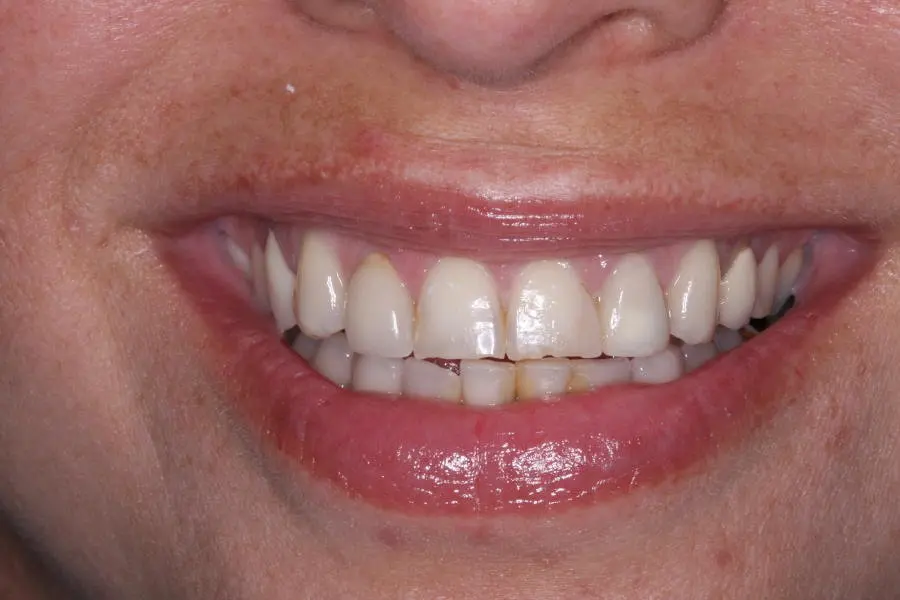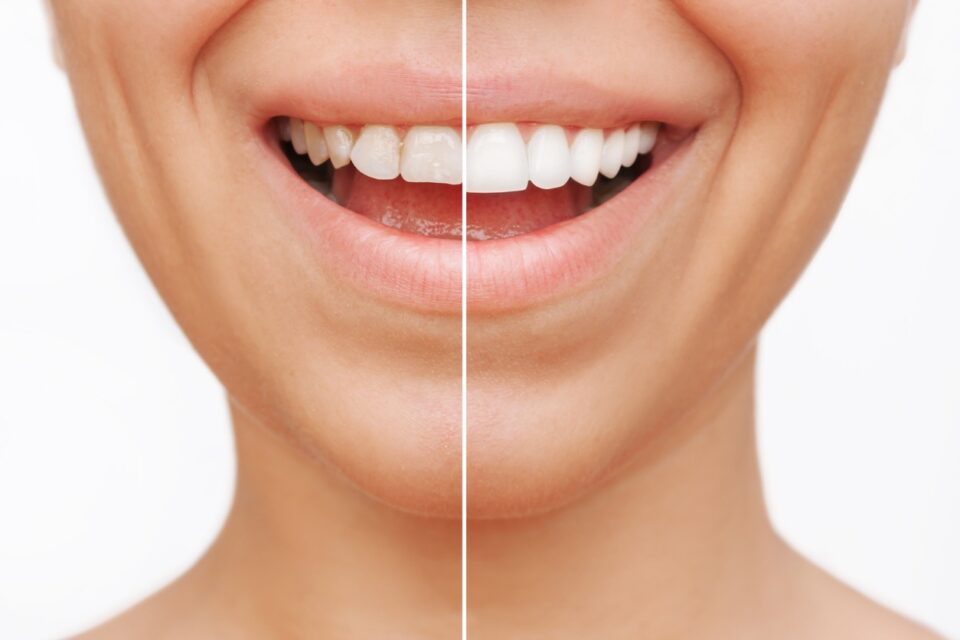Breaking a tooth can be unsettling, but don’t worry—there are several effective options to restore your smile. Whether the damage is minor or more extensive, treatments ranging from dental bonding and crowns to veneers and implants are available. These solutions not only improve the appearance of your smile but also ensure the functionality of your teeth.
Consulting with your dentist is the first step toward finding the right treatment tailored to your needs. They will guide you through the options based on the severity of the break and your overall dental health. So, take a deep breath and get ready to smile confidently again!
What are the typical procedures for repairing a broken tooth?
The procedures for repairing a broken tooth depend on the extent of the damage and the patient’s specific needs. Some typical procedures for fixing a broken tooth include:
- Dental Bonding: Repairing tiny tooth chips or cracks is easy and affordable. The damaged area is filled with tooth-colored composite resin and molded to restore its form and look. The resin is hardened using a specific light to adhere to the tooth, creating a durable, natural-looking replacement.
- Dental Crown: A dental crown may require more significant damage or structural compromise. A crown covers the entire tooth above the gumline with a fitted cap. Crowns, constructed of porcelain, ceramic, or metal, restore the tooth’s strength, shape, and function while preventing additional damage.
- Root Canal Therapy: Root canal therapy may save a tooth with pulp injury or infection from a fractured tooth. This surgery removes sick or injured pulp tissue from the tooth and cleans, disinfects, and seals the root canal system to avoid infection. After root canal therapy, a dental crown usually covers one tooth to strengthen and prevent further damage.
- Dental Implant or Bridge: If a tooth is missing, dental implants or bridges may help. Bridges connect two adjacent teeth, while dental implants are titanium posts surgically implanted in the jawbone to replace missing teeth. Implants and bridges are personalized to match natural teeth, restoring the patient’s smile and oral function.
The severity of the damage, the patient’s dental health, and their treatment goals determine the best tooth restoration method. Patients can decide how to restore their smile and maintain dental health by seeing a dentist.
Are there noninvasive methods available for restoring a damaged tooth?
Noninvasive methods are available for restoring a damaged tooth, particularly for minor chips or cracks. These noninvasive methods aim to repair the tooth without the need for extensive tooth preparation or removal of healthy tooth structure. Some noninvasive techniques for restoring a damaged tooth include:
- Dental Bonding: Dental bonding is noninvasive and conservative for repairing minor tooth chips, cracks, and gaps. The damaged area is bonded with a tooth-colored composite resin that matches the tooth’s natural shapes. The resin is hardened using a specific light to adhere to the tooth, creating a durable, natural-looking replacement. Dental bonding can be done in one visit with minimum tooth preparation.
- Microabrasion: Microabrasion removes dental enamel stains and flaws without surgery. A fine abrasive substance softly removes a tiny enamel layer to improve the tooth’s look. Microabrasion can smooth rough teeth and restore their natural brilliance without injections or drilling.
- Porcelain Veneers: While porcelain veneers need tooth preparation, they are a noninvasive way to restore damaged or discolored teeth. Veneers are thin porcelain shells covering teeth’ front surfaces to hide flaws and improve smiles. Porcelain veneers need less tooth reduction than dental crowns, making them a conservative smile enhancement alternative.
Noninvasive methods for restoring a damaged tooth offer conservative treatment options that preserve healthy tooth structure and provide natural-looking results. By consulting with a qualified dentist, individuals can explore these noninvasive options and determine the best approach for restoring their smile while maintaining optimal oral health.
How do dental crowns compare to dental bonding for fixing a broken tooth?
Dental crowns and dental bonding are practical options for fixing a broken tooth, but they differ in several key aspects, including durability, aesthetics, and invasiveness.
- Durability: Dental crowns are custom-made caps that protect and support the entire visible tooth above the gumline. Because they endure biting and chewing, they are indicated for recovering severely damaged or structurally compromised teeth. Dental bonding uses a tooth-colored composite resin to repair the injured area. However, it may only last briefly in regions with severe biting pressures.
- Aesthetics: Dental crowns and bonding can be customized to match natural teeth’s color and appearance, but porcelain crowns offer superior aesthetics due to their close resemblance to natural tooth enamel. They can also be color-matched to adjacent teeth for a harmonious smile. Dental bonding, on the other hand, is more susceptible to staining and discoloration, requiring periodic maintenance and replacement.
- Invasiveness: Dental crowns and bonding differ in tooth structure and invasiveness. Crowns require extra preparation and may require many dental treatments due to tooth reduction. On the other hand, bonding preserves tooth structure and can be done in one dentist appointment.
Dental crowns and bonding can repair fractured teeth, each with its own pros and cons. Dental crowns are more robust and more attractive but require more dental preparation. Dental bonding is minimally invasive and excellent for modest repairs, but crowns may last longer. The patient’s oral health, damage, and treatment goals determine whether to use crowns or bonding. A knowledgeable dentist can help people choose the best smile restoration and oral health choice.
What factors should be considered when deciding between dental implants and bridges for a missing tooth?
When deciding between dental implants and bridges for a missing tooth, several factors should be carefully considered to identify the best treatment for each individual. These factors include:
- Longevity: Dental implants are considered lasting tooth replacement since they are designed to be durable and potentially last a lifetime with proper care. In contrast, dental bridges typically have a lifespan of around 10 to 15 years and may require replacement over time.
- Bone Health: Dental implants help preserve bone health by boosting the jawbone and halting bone resorption in the missing tooth area. This can help maintain the structure and integrity of the jawbone over time. Dental bridges, on the other hand, do not stimulate the jawbone and may lead to bone resorption over time, particularly in the absence of a tooth root.
- Adjacent Tooth Health: Dental implants do not rely on neighboring teeth for support, as they are anchored directly into the jawbone. This means adjacent teeth need not be altered or prepared to support the implant. In contrast, dental bridges require the preparation of neighboring teeth to serve as abutments for the bridge, which may compromise their long-term health and integrity.
- Aesthetics: Dental implants offer excellent aesthetic results, as they resemble natural teeth both in look and function rather closely. They integrate seamlessly with the surrounding dentition and provide a lifelike replacement for the missing tooth. Dental bridges can also provide satisfactory aesthetic results, but the appearance may not be as natural-looking as implants, mainly if the bridge is visible when smiling.
- Cost: Dental implants are typically more expensive upfront than dental bridges, as they involve a surgical procedure and the placement of a titanium implant fixture. However, implants may offer better long-term value due to their durability and longevity. Dental bridges are a more affordable option initially but may require replacement and maintenance over time, which can incur additional costs.
- Treatment Time: Dental implants require a longer treatment time than dental bridges, as the implant must merge with the jawbone before complete repair. This process can take several months and involves multiple dental appointments. By comparison, dental bridges can be made and put in a shorter time frame, typically within a few weeks.
Selecting dental implants over bridges ultimately comes down to the patient’s oral health, treatment goals, budget, and personal preferences. Speaking with a licensed dentist might benefit people to evaluate their options and determine the most appropriate treatment plan for replacing a missing tooth.
Repair Your Smile: Explore Tooth Restoration!
Jaline Boccuzzi Dentistry invites you to discover the comprehensive options available for restoring your damaged tooth. Our specialists provide personalized care and innovative solutions to address your dental concerns effectively.
Whether you require dental bonding to fix minor chips or cracks or a dental crown for more extensive damage, we offer tailored treatments to revitalize your smile and oral health. Our skill and dedication to perfection will return your smile to its full beauty and function through restoring your smile to its full beauty and function. Schedule your consultation today!


